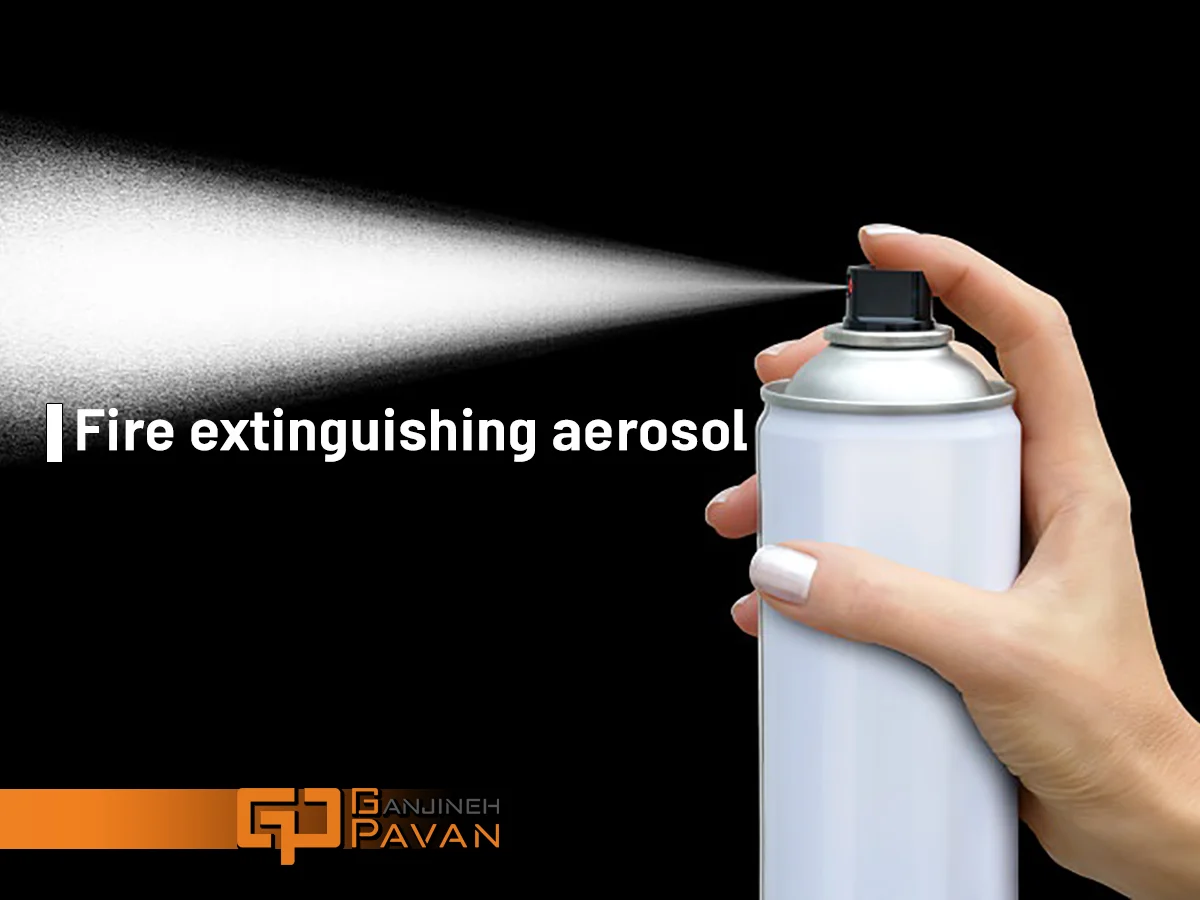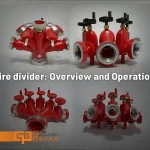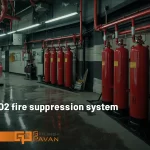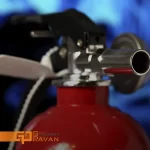After the phase-out of halogen fire extinguishing systems in the 1990s due to environmental concerns, the demand for alternative extinguishing methods arose. The Aerosol fire extinguishing system emerged as one of the viable options in response to this demand and has been increasingly adopted in the market. Therefore, this article from Ganjineh Pavan explores the aerosol fire extinguishing system.
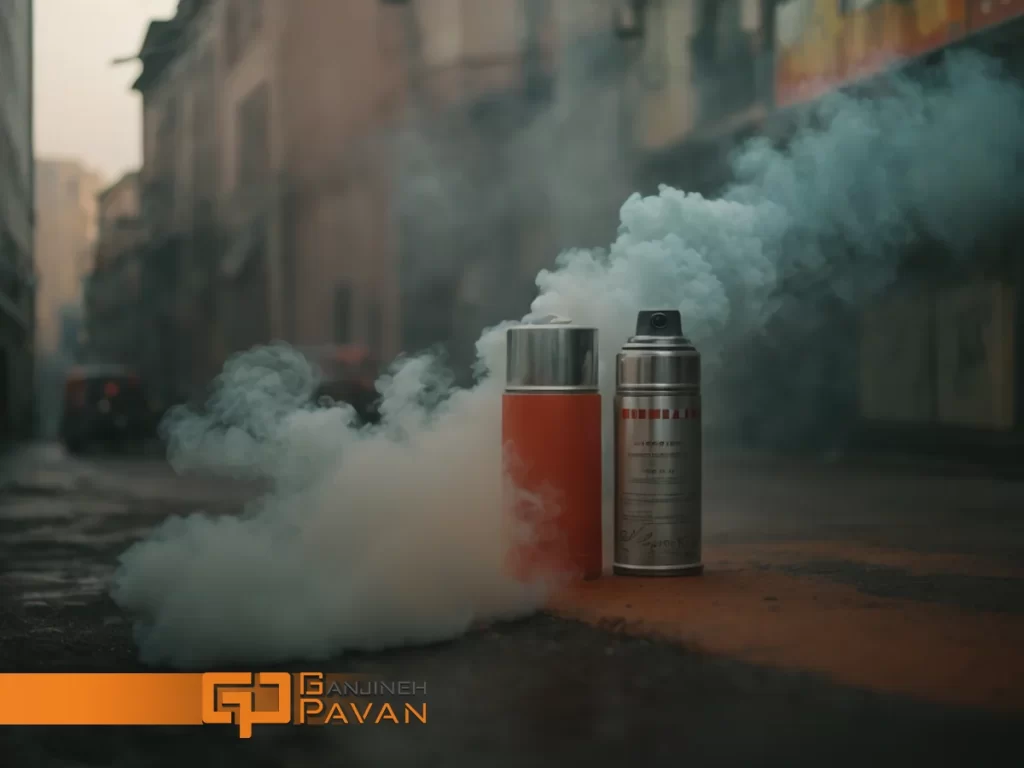
What is an aerosol?
Aerosol refers to the suspension of fine solid or liquid particles in a gas, typically in the form of a fine mist or spray. Various methods, such as aerosol cans or natural processes like volcanic eruptions, can disperse these particles into the air.
Meaning of “Aerosol”
The term “aerosol” is originated from two Greek words: “aero,” meaning air or gas, and “sol,” meaning solution or suspension. Invented in the early 20th century by scientists studying the dispersion of particles or droplets in a gaseous medium, the word is commonly used today to describe a substance comprising fine particles or droplets suspended in a gas, usually air.
Aerosol in English
In English, the term “aerosol” is spelled as it sounds, “aerosol.” It is derived by blending the Greek word “aero” with the first three letters of the word “solution,” conveying the idea of a solution.
Aero + sol = Aerosol
History of Aerosol Technology
The development of modern aerosol technology commenced in the late 18th century and has undergone significant evolution since then. In 1790, English scientist Joseph Priestley pioneered the use of an aerosol-like device, a pneumatic blower designed to spray carbonated water for beverage use.
In the mid-1800s, French inventor Francis Wolle created a handheld sprayer for applying liquid insecticides. The early 20th century witnessed the application of aerosol-like systems in medical treatments for throats, nasal sprays, and topical medications.
A pivotal advancement occurred in 1926 when Norwegian engineer Erik Rotheim patented the first aerosol valve, allowing controlled release using pressurized air or other propellants.
The commercial potential of aerosol technology was recognized in the 1930s and 1940s. The inaugural commercial aerosol pesticide, “Pyrethrum Aerosol,” debuted in 1943 by the American company Urban J. Gunter.
World War II heightened interest in aerosol technology, with applications in insecticides for disease prevention and the development of aerosol flamethrowers for military use.
Post-World War II, aerosol technology rapidly progressed, leading to diverse applications in cosmetics, personal care, paints, lubricants, household cleaners, and more.
In the mid-1970s, environmental concerns arose, particularly regarding chlorofluorocarbons (CFCs) used as propellants, prompting the adoption of environmentally friendly alternatives.
Today, aerosols find extensive use across industries due to their convenience and ongoing technological advancements, incorporating safer formulations and improved valve systems.
Types of Aerosols
Aerosols can be natural (e.g., volcanic ash, sea salt) or man-made. Man-made aerosols, produced through mechanisms like spray cans, include:
- Aerosol Spray: Products like deodorants, hair sprays, and air fresheners release as a fine mist or spray.
- Foam Aerosols: Shaving creams and cleansing foams are released as a foam.
- Powder Aerosols: Found in dry shampoos and insecticides, these are released as powder or dry particles.
Aerosol Applications
Aerosols serve diverse purposes across industries:
- Personal Care: Deodorants, hair sprays, body sprays, and sunscreens.
- Household Products: Air fresheners, cleaning products, insecticides, and lubricants.
- Colors and Coatings: Paints, primers, varnishes, and coatings.
- Medical: Inhalers for respiratory medication delivery.
- Automotive: Car paints, rust inhibitors, lubricants, and cleaners.
- Food Industry: Cooking oils, whipped cream, and non-stick cooking sprays.
- Agriculture: Pesticides, herbicides, and fertilizers for crop protection.
- Fire Department: Fire extinguishers utilizing aerosols as propellants.
History of Aerosol Fire Extinguishing Systems
Aerosol fire extinguishing systems emerged in the 1990s and gained popularity in various industries. Solid aerosol generators were initially developed for aerospace applications, providing effective firefighting in engine compartments.
In the early 2000s, gas aerosols were explored for firefighting, creating extinguishing clouds that interrupt chemical reactions or cool the environment. This technology found applications in the military, aviation, and marine sectors.
Aerosol Fire Extinguishing Mechanism
Aerosol extinguishing systems operate by releasing a fine dust or mist of an extinguishing agent in the affected area. This action induces suffocation in the fire by either removing oxygen or cooling it.
The extinguishing agents used can vary but are typically non-toxic and environmentally friendly. Common examples include potassium compounds, carbon dioxide, and inert gases like nitrogen or argon, stored under pressure in a can or container.
Upon detecting a fire, the aerosol fire extinguishing mechanism is activated either manually or automatically. Once activated, pressure inside the can is released, expelling the aerosol agent through nozzles or openings within the container. This agent disperses as a cloud or cloud-like dust, rapidly filling the area.
As the aerosol agent spreads, it forms a blanket over the fire, reducing the oxygen concentration. This inhibits the combustion process, leading to the extinguishing or extinction of the fire. Additionally, the aerosol mist aids in cooling the surrounding area, preventing the fire from spreading.
read more: The most important safety tips to prevent a house fire
The most important safety tips to prevent a house fire
Aerosol Fire Extinguishing Applications
Aerosol fire extinguishing systems demonstrate effectiveness and versatility in rapidly and efficiently extinguishing fires. Common applications include:
Aerosol Fire Extinguishing System in Data Centers: Utilized to safeguard critical electronic equipment in data centers, minimizing downtime and data loss.
Servers and Telecommunication Facilities: Protects servers and telecommunications infrastructure, swiftly suppressing fires and minimizing equipment damage.
Industrial Facilities: Widely employed in power plants, manufacturing plants, and oil refineries to quickly suppress fires in high-risk areas, enhancing employee safety.
Electrical Cabinets and Control Rooms: Typically used to protect electrical cabinets and control rooms, swiftly suppressing electrical fires and preventing further damage.
Marine and Offshore Applications: Applied in marine and offshore settings like ships, oil rigs, and platforms to effectively extinguish fires in remote and confined spaces.
Vehicles and Transportation: Installed in vehicles, particularly public transport, to detect and suppress fires swiftly, ensuring passenger safety.
Historical Buildings and Museums: Employed to protect valuable works and cultural assets, offering a reliable and damage-free fire extinguishing method.
In general, aerosol fire extinguishing systems are versatile, finding application in various industries where fire safety is crucial. Their ability to swiftly suppress fires without causing additional damage makes them an effective and reliable choice for fire protection.
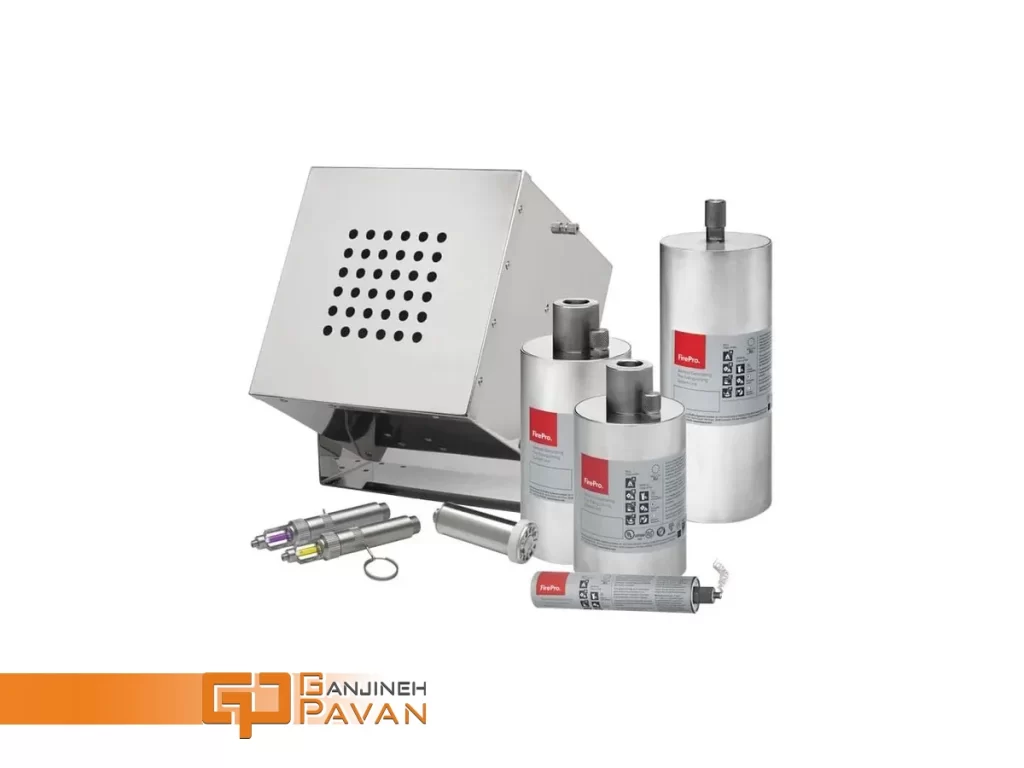
Disadvantages of Aerosol Fire Extinguishing Systems
Despite their advantages, aerosol fire extinguishing systems have some limitations:
Toxicity under Certain Conditions: Inhalation of aerosols in large quantities or over extended periods may pose health risks. Proper ventilation and safety measures are crucial to minimize this risk.
Dispersion Limitations: These systems may face challenges in large open spaces, as fine particles might disperse before reaching the fire. They are better suited for enclosed areas where the aerosol can be effectively contained and concentrated.
Limited Reusability: Once activated, aerosol extinguishing agents cannot be easily reused or recharged, potentially necessitating a complete system replacement and incurring additional costs.
Temperature Limitations: Aerosol systems may not be suitable for very high-temperature environments, and additional cooling measures may be required to fully contain the fire.
In a general assessment, it can be concluded that aerosol fire extinguishing systems may not be suitable for use in constantly occupied enclosed spaces like server rooms due to the lack of piping, nozzles, or pumps, despite their high-quality and rapid extinguishing capabilities. However, they remain a suitable and economical option for electric cabinets, museums, and industrial facilities.
Resources:
https://earthobservatory.nasa.gov/
https://www.nfpa.org/

